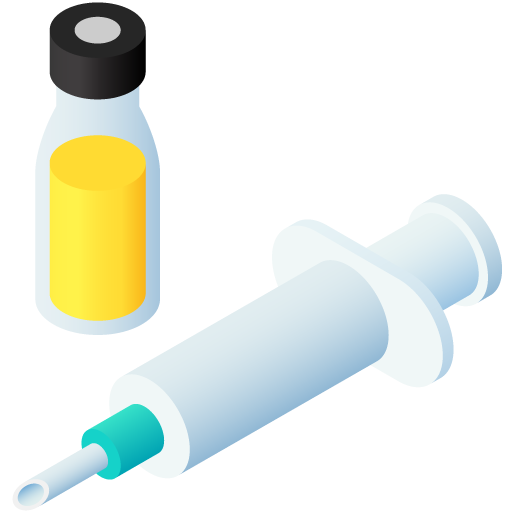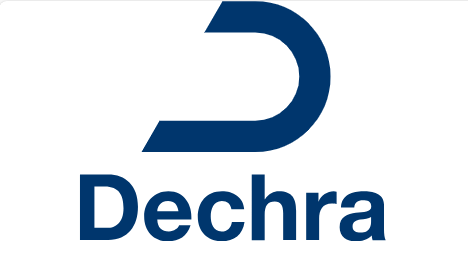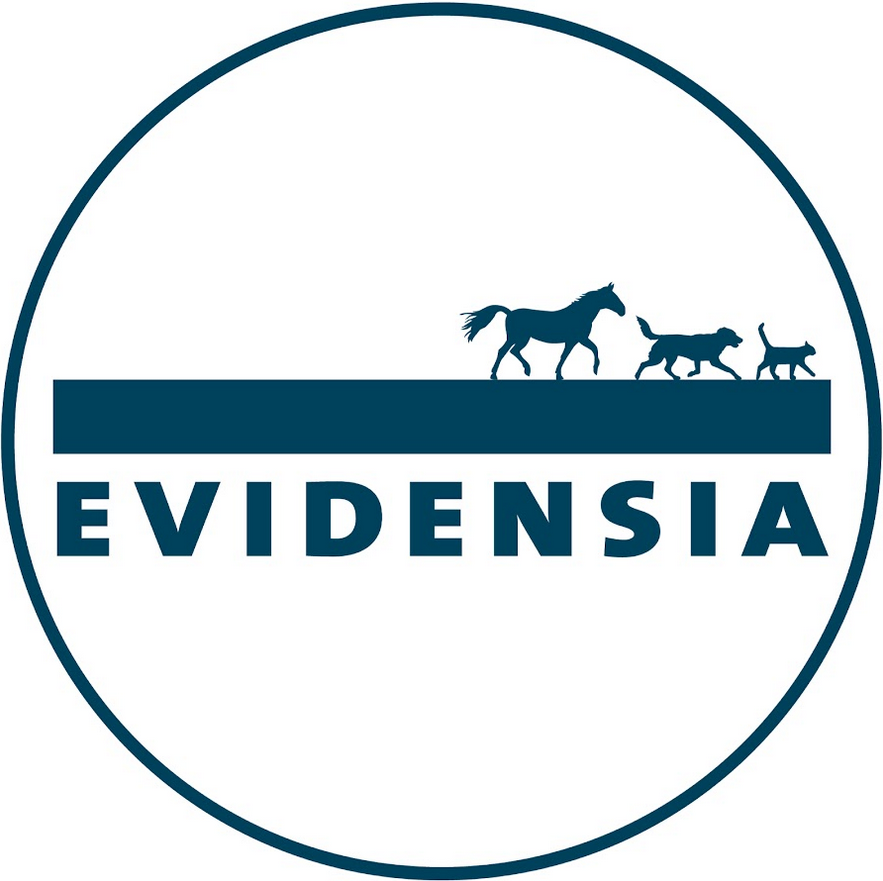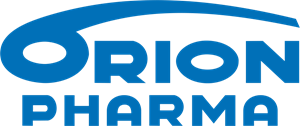Cevaxel-RTU
Active substance
ATC code
Species
Cattle and pigs.
Indications
Infections associated with bacteria sensitive to ceftiofur.
In Cattle:
For the treatment of bacterial respiratory disease associated with Histophilus somni, Mannheimia haemolytica and Pasteurella multocida.
For the treatment of acute interdigital necrobacillosis (panaritium, foot rot), associated with Fusobacterium necrophorum and Bacteroides melaninogenicus (Porphyromonas asaccharolytica).
For treatment of the bacterial component of acute post-partum (puerperal) metritis within 10 days after calving associated with Escherichia coli, Trueperella pyogenes and Fusobacterium necrophorum: : this indication is restricted to cases where treatment with another antimicrobial has failed.
In Pigs:
For the treatment of bacterial respiratory disease associated with Pasteurella multocida, Actinobacillus pleuropneumoniae and Streptococcus suis.
Dose to be administered and administration route
Cattle: Subcutaneous use
- Respiratory disease: 1 mg ceftiofur (as hydrochloride)/kg /day for 3 to 5 days, i.e. 1 ml/50 kg at each injection.
- Acute interdigital necrobacillosis: 1 mg ceftiofur (as hydrochloride)/kg /day for 3 days, i.e. 1 ml/50 kg at each injection.
- Acute post-partum metritis within 10 days after calving:
1 mg ceftiofur (as hydrochloride)/kg /day for 5 consecutive days, i.e. 1 ml/50 kg at each injection.
In case of acute post-partum metritis, additional supportive therapy might be required in some cases.
Pigs: Intramuscular use
3 mg ceftiofur (as hydrochloride)/kg /day for 3 days, i.e. 1 ml/16 kg at each injection.
Shake the bottle well before use to bring the product back into suspension.
To ensure a correct dosage, body weight should be determined as accurately as possible.
Subsequent injections must be given at different sites.
As the vial cannot be broached more than 50 times, the user should choose the more appropriate vial size.
Adverse reactions
Cattle:
|
Very rare (<1 animal / 10,000 animals treated, including isolated reports): |
Hypersensitivity reaction1, Allergic skin reaction1, Anaphylaxis1 |
|
Rare (1 to 10 animals / 10,000 animals treated): |
Injection site reaction2 (e.g. inflammation, oedema, thickening3, discoloration4) |
1In case of the occurrence of allergic reaction the treatment should be withdrawn. 2Clinical resolution is reached in most animals by 10 days after injection although slight tissue discoloration may persist for 28 days or more.
3Of connective tissue
4Of the subcutaneous tissue and/or fascial surface of the muscle
Pigs
|
Very rare (<1 animal / 10,000 animals treated, including isolated reports): |
Hypersensitivity reaction1, Allergic skin reaction1, Anaphylaxis1 |
|
Undetermined frequency (cannot be estimated from the available data) |
Injection site reaction (e.g. discoloration) 2 |
1In case of the occurrence of allergic reaction the treatment should be withdrawn.
2 Of the fascia or fat, mild, observed in some animals for up to 20 days after injection.
Reporting adverse events is important. It allows continuous safety monitoring of a veterinary medicinal product. Reports should be sent, preferably via a veterinarian, to either the marketing authorisation holder or the national competent authority via the national reporting system. See the package leaflet for respective contact details.
Dispensing
POM-V - Prescription Only Medicine – VeterinarianSUMMARY OF PRODUCT CHARACTERISTICS
1. NAME OF THE VETERINARY MEDICINAL PRODUCT
Cevaxel-RTU 50 mg/ml, Suspension for Injection for Cattle and Pigs
2. QUALITATIVE AND QUANTITATIVE COMPOSITION
Each ml contains:
Active substance:
Ceftiofur (as hydrochloride) 50 mg
For the full list of excipients, see section 6.1.
3. PHARMACEUTICAL FORM
Suspension for injection.
Oily beige suspension for injection
4. CLINICAL PARTICULARS
4.1 Target species
Cattle and pigs.
4.2 Indications for use, specifying the target species
Infections associated with bacteria sensitive to ceftiofur.
In cattle:
For the treatment of bacterial respiratory disease associated with Pasteurella multocida, Mannheimia haemolytica and Histophilus somi.
For the treatment of acute interdigital necrobacillosis (panaritium, foot rot), associated with Fusobacterium necrophorum and Bacteroides melaninogenicus (Porphyromonas asaccharolytica).
For treatment of the bacterial component of acute post-partum (puerperal) metritis within 10 days after calving associated with Escherichia coli, Arcanobacterium pyogenes and Fusobacterium necrophorum: : this indication is restricted to cases where treatment with another antimicrobial has failed.
In pigs:
For the treatment of bacterial respiratory disease associated with Pasteurella multocida, Actinobacillus pleuropneumoniae and Streptococcus suis.
4.3 Contraindications
Do not administer to an animal previously found to be hypersensitive to ceftiofur and other β -lactam antibiotics.
Do not inject intravenously.
Do not use where resistance to other cephalosporins or beta-lactam antibiotics has occured.
Do not use in poultry (including eggs) due to risk of spread of antimicrobial resistance to humans.
4.4 Special warnings for each target species
None known.
4.5 Special precautions for use
Special precautions for use in animals
Do not use as prophylaxis in case of retained placenta.
This product selects for resistant strains such as bacteria carrying extended spectrum betalactamases (ESBL) and may constitute a risk to human health if these strains disseminate to humans e.g. via food. For this reason, this product should be reserved for the treatment of clinical conditions which have responded poorly, or are expected to respond poorly (refers to very acute cases when treatment must be initiated without bacteriological diagnosis) to first line treatment. Official, national and regional antimicrobial policies should be taken into account when the product is used. Increased use, including use of the product deviating from the instructions given in the SPC, may increase the prevalence of such resistance. Whenever possible, this product should only be used based on susceptibility testing.
This product is intended for treatment of individual animals. Do not use for disease prevention or as a part of heard health programmes. Treatment of groups of animals should be strictly restricted to ongoing disease outbreaks according to the approved conditions of use.
Special precautions to be taken by the person administering the veterinary medicinal product to animals
Penicillins and cephalosporins may cause hypersensitivity (allergy) following injection, inhalation, ingestion or skin contact. Hypersensitivity to penicillins may lead to cross reactions to cephalosporins and vice versa. Allergic reactions to these substances may occasionally be serious.
- Do not handle this product if you know you are sensitised or if you have been advised not to work with such preparations.
- Handle this product with great care to avoid exposure. Wash hands after use.
- If you develop symptoms following exposure, such as a skin rash, you should seek medical advice and show the doctor this warning.
Swelling of the face, lips or eyes or difficulty with breathing are more serious symptoms and require urgent medical attention.
4.6 Adverse reactions (frequency and seriousness)
Hypersensitivity reactions (e.g. skin reactions, anaphylaxia) have been reported in very rare cases. In case of the occurrence of hypersensitivity reaction the treatment should be withdrawn.
In pigs, mild reactions at the injection site, such as discoloration of the fascia or fat, have been observed in some animals for up to 20 days after injection.
In cattle, mild inflammatory reactions at the injection site, such as tissue oedema, thickening of connective tissue and discoloration of the subcutaneous tissue and/or fascial surface of the muscle may be observed in rare cases. Clinical resolution is reached in most animals by 10 days after injection although slight tissue discoloration may persist for 28 days or more.
The frequency of adverse reactions is defined using the following convention:
- very common (more than 1 in 10 animals displaying adverse reaction(s) during the course of one treatment)
- common (more than 1 but less than 10 animals in 100 animals)
- uncommon (more than 1 but less than 10 animals in 1,000 animals)
- rare (more than 1 but less than 10 animals in 10,000 animals)
- very rare (less than 1 animal in 10,000 animals, including isolated reports).
4.7 Use during pregnancy, lactation or lay
Studies in laboratory animals have not produced any evidence of teratogenic, foetotoxic or maternotoxic effects. The safety of the product has not been established in sows or cows during pregnancy and lactation.
Use only according to a benefit/risk assessment by the responsible veterinarian.
4.8 Interaction with other medicinal products and other forms of interaction
The bactericidal properties of cephalosporins are antagonized by simultaneous use of bacteriostatic antibiotics (macrolides, sulfonamides and tetracyclines).
4.9 Amounts to be administered and administration route
Cattle: Subcutaneous use
- Respiratory disease: 1 mg ceftiofur (as hydrochloride)/kg /day for 3 to 5 days, i.e. 1 ml/50 kg at each injection.
- Acute interdigital necrobacillosis: 1 mg ceftiofur (as hydrochloride)/kg /day for 3 days, i.e. 1 ml/50 kg at each injection.
- Acute post-partum metritis within 10 days after calving: 1 mg ceftiofur (as hydrochloride)/kg /day for 5 consecutive days, i.e. 1 ml/50 kg at each injection.
In case of acute post-partum metritis, additional supportive therapy might be required in some cases.
Pigs: Intramuscular use
3 mg ceftiofur (as hydrochloride)/kg /day for 3 days, i.e. 1 ml/16 kg at each injection.
Shake the bottle well before use to bring the product back into suspension.
To ensure a correct dosage, body weight should be determined as accurately as possible in order to avoid under-dosing. Subsequent injections must be given at different sites. As the vial cannot be broached more than 50 times, the user should choose the more appropriate vial size.
4.10 Overdose (symptoms, emergency procedures, antidotes), if necessary
The low toxicity of ceftiofur has been demonstrated in pigs using ceftiofur sodium at doses in excess of 8 times the recommended daily dose of ceftiofur intramuscularly administered for 15 consecutive days.
In cattle, no signs of systemic toxicity have been observed following substantial parenteral overdosages.
4.11 Withdrawal periods
Cattle:
Meat and offal: 8 days. Milk: zero hours.
Pigs:
Meat and offal: 5 days.
5. PHARMACOLOGICAL PROPERTIES
Pharmacotherapeutic group: Antibacterials for systemic use, third generation cephalosporins ATCvet code: QJ01DD90
5.1 Pharmacodynamic properties
Ceftiofur is a third generation of cephalosporin, which is active against many Grampositive and Gram-negative bacteria, including ß –lactamase producing strains.
Ceftiofur inhibits the bacterial cell wall synthesis, thereby exerting its bactericidal properties.
Beta-lactams act by interfering with synthesis of the bacterial cell wall. Cell wall synthesis is dependent on enzymes that are called penicillin-binding proteins (PBP's).
Bacteria develop resistance to cephalosporins by four basic mechanisms:
1) by altering or acquiring penicillin binding proteins insensitive to an otherwise effective ß -lactam;
2) by altering the permeability of the cell to ß-lactams;
3) by producing b -lactamases that cleave the ß-lactam ring of the molecule, or 4) by active efflux.
Some ß-lactamases, documented in Gram-negative enteric organisms, may confer elevated MICs to varying degrees to third and fourth generation cephalosporins, as well as penicillins, ampicillins, b -lactam inhibitor combinations, and first and second generation cephalosporins.
Ceftiofur is active against the following microorganisms which are involved in respiratory diseases in pigs: Pasteurella multocida, Actinobacillus pleuropneumoniae and
Streptococcus suis. Bordetella bronchiseptica is intrinsically non-susceptible to ceftiofur.
It is also active in cattle against:
• bacteria involved in respiratory disease: Pasteurella multocida, Mannheimia spp., Histophilus somni;
• bacteria involved in acute interdigital necrobacillosis (foot rot) : Fusobacterium necrophorum, Bacteroides melaninogenicus (Porphyromonas asaccharolytica); and
• bacteria associated with acute post-partum (puerperal) metritis: Escherichia coli, Arcanobacterium pyogenes and Fusobacterium necrophorum.
The following Minimum Inhibitory Concentrations (MIC) have been determined for ceftiofur in European isolates (France, United Kingdom, Netherlands, Denmark, Germany, Belgium, Italy, Czech Republic, Ireland, Poland and Spain) collected from diseased animals between 2000 to 2012:
|
Bacteria species |
Origin |
Year |
Nb of strains |
MIC of ceftiofur (µg/mL) |
||
|
Range |
MIC50 |
MIC90 |
||||
|
Pasteurella multocida |
Cattle |
2009 to 2012 |
149 |
≤0.002 – 0.12 |
0.015 |
0.015 |
|
Pigs |
2009 to 2012 |
152 |
≤0.002 – 0.06 |
0.04 |
0.04 |
|
|
Mannheimia haemolytica |
Cattle |
2009 to 2012 |
149 |
≤0.002 – 0.12 |
0.015 |
0.015 |
|
Histophilus somni |
Cattle |
2009 to 2012 |
66 |
≤0.002-0.008 |
≤0.002 |
0.004 |
|
Escherichia coli |
Cattle |
2005 – 2006 |
163 |
0.06 – 1 |
0.23 |
0.44 |
|
Arcanobacterium pyogenes |
Cattle |
2007 – 2008 |
30 |
0.06 – 0.25 |
0.09 |
0.12 |
|
Fusobacterium necrophorum |
Cattle |
2000 to 2006 |
27 |
0.015 – 16 |
0.1 |
0.2 |
|
Actinobacillus pleuropneumoniae |
Pigs |
2009 to 2012 |
157 |
0.008-2 |
0.015 |
0.03 |
|
Streptococcus suis |
Pigs |
2009 to 2012 |
151 |
–0.06-16 |
0.12 |
0.5 |
The following ceftiofur breakpoints are used: ≤2 µg/mL (Susceptible), 4 µg/mL (Intermediate) and ≥ 8 µg/mL (Resistant).
No breakpoints have been determined to date for the pathogens associated with foot rot or acute post-partum metritis in cows.
5.2 Pharmacokinetic particulars
After administration, ceftiofur is quickly metabolised to desfuroylceftiofur, the principal active metabolite.
Desfuroylceftiofur has an equivalent anti-microbial activity to ceftiofur against the bacteria involved in respiratory disease in animals. The active metabolite is reversibly bound to plasma proteins. Due to transportation with these proteins, the metabolite concentrates at a site of infection, is active and remains active in the presence of necrotic tissue and debris.
In pigs given a single intramuscular dose of 3 mg/kg body weight (bw), maximum plasma concentrations of 13.2 µg/mL were reached after 2 hours; the terminal elimination half-life (t½) of desfuroylceftiofur was 16.4 hours. No accumulation of desfuroylceftiofur has been observed after a dose of 3 mg ceftiofur/kg bw/day administered daily over 3 days.
The elimination occurred mainly via the urine (more than 70 %). Average recoveries in faeces accounted for approximately 12-15 % of the drug.
Ceftiofur is completely bioavailable following intramuscular administration.
After a single 1 mg/kg dose given subcutaneously to cattle, maximum plasma levels of 2.82 µg/mL are reached within 4 hours after administration. In other studies, on healthy cows, a Cmax of 2.25 µg/mL was reached in the endometrium 5 hours after a single administration. Maximum concentrations reached in caruncles and lochiae of healthy cows were 1.11 µg/mL and 0.98 µg/mL, respectively.
The terminal elimination half-life (t½) of desfuroylceftiofur in cattle is 12.1 hours. No accumulation was observed after a daily treatment over 5 days. The elimination occurs mainly via the urine (more than 55 %) and the faeces (30%). Ceftiofur is completely bioavailable following subcutaneous administration.
6. PHARMACEUTICAL PARTICULARS
6.1 List of excipients
Anhydrous colloidal silica
Sorbitan oleate
Propylene glycol dicaprylocaprate
6.2 Incompatibilities
In the absence of compatibility studies, this veterinary medicinal product must not be mixed with other veterinary medicinal products.
6.3 Shelf life
Shelf-life of the veterinary medicinal product as packaged for sale: 3 years Shelf-life after first opening the vial: 28 days
6.4 Special precautions for storage
Keep the vial in the outer carton in order to protect from light.
6.5 Nature and composition of immediate packaging
Primary packaging:
Translucent PP/Ethylene vinyl alcohol/PP multi-layer plastic vials. Chlorobutyl rubber stopper with aluminium cap.
Pack size
Cardboard box containing one 100 ml vial
Cardboard box containing one 250 ml vial
Cardboard box containing one 50 ml vial
Not all pack sizes may be marketed.
6.6 Special precautions for the disposal of unused veterinary medicinal product or waste materials derived from the use of such products
Any unused veterinary medicinal product or waste materials derived from such veterinary medicinal products should be disposed of in accordance with local requirements.
7. MARKETING AUTHORISATION HOLDER
Ceva Animal Health Ltd
Explorer House
Mercury Park
Wycombe Lane
Wooburn Green
High Wycombe
Buckinghamshire
HP10 0HH
United Kingdom
8. MARKETING AUTHORISATION NUMBER
Vm 15052/4051
9. DATE OF FIRST AUTHORISATION
08 April 2011
10. DATE OF REVISION OF THE TEXT
September 2022

Approved: 28 September 2022

| Art. Nr. | 15052/4051 |
|---|---|
| EAN | 3411112962938 |
 TRUSTED SOURCE
TRUSTED SOURCE








